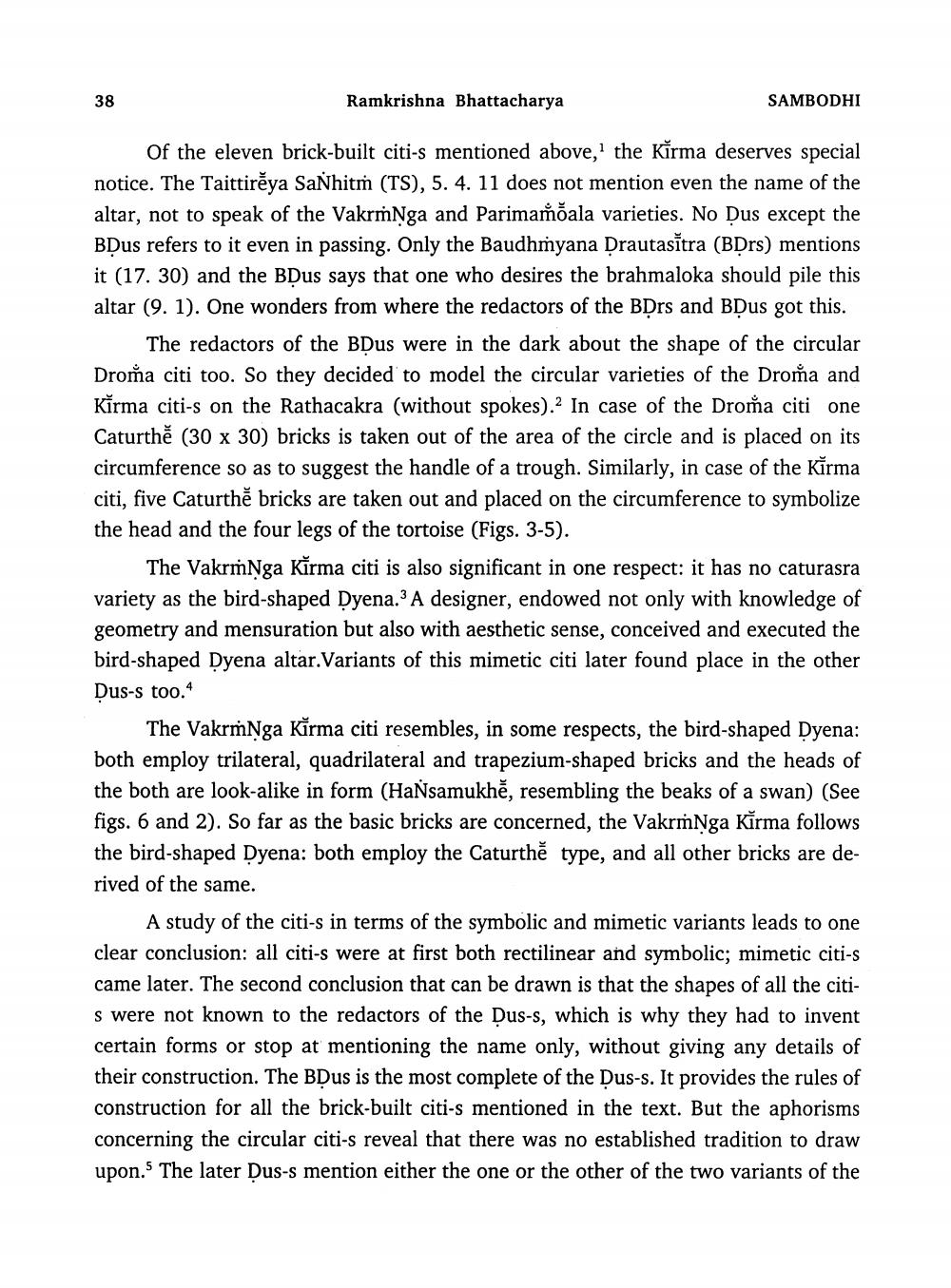________________
38
Ramkrishna Bhattacharya
SAMBODHI
Of the eleven brick-built citi-s mentioned above, the Kîrma deserves special notice. The Taittirěya SaNhitṁ (TS), 5. 4. 11 does not mention even the name of the altar, not to speak of the VakrṁNga and Parimasoala varieties. No Dus except the BDus refers to it even in passing. Only the Baudhủyana Drautasītra (BDrs) mentions it (17. 30) and the BDus says that one who desires the brahmaloka should pile this altar (9. 1). One wonders from where the redactors of the BDrs and BDus got this.
The redactors of the BDus were in the dark about the shape of the circular Drosa citi too. So they decided to model the circular varieties of the Drosa and Kirma citi-s on the Rathacakra (without spokes). In case of the Drosa citi one Caturthě (30 x 30) bricks is taken out of the area of the circle and is placed on its circumference so as to suggest the handle of a trough. Similarly, in case of the Kõrma citi, five Caturthě bricks are taken out and placed on the circumference to symbolize the head and the four legs of the tortoise (Figs. 3-5).
The VakrmNga Kõrma citi is also significant in one respect: it has no caturasra variety as the bird-shaped Dyena.? A designer, endowed not only with knowledge of geometry and mensuration but also with aesthetic sense, conceived and executed the bird-shaped Dyena altar. Variants of this mimetic citi later found place in the other Dus-s too.
The VakrṁNga Kìrma citi resembles, in some respects, the bird-shaped Dyena: both employ trilateral, quadrilateral and trapezium-shaped bricks and the heads of the both are look-alike in form (HaNsamukhě, resembling the beaks of a swan) (See figs. 6 and 2). So far as the basic bricks are concerned, the VakrṁNga kõrma follows the bird-shaped Dyena: both employ the Caturthể type, and all other bricks are derived of the same.
A study of the citi-s in terms of the symbolic and mimetic variants leads to one clear conclusion: all citi-s were at first both rectilinear and symbolic; mimetic citi-s came later. The second conclusion that can be drawn is that the shapes of all the citis were not known to the redactors of the Dus-s, which is why they had to invent certain forms or stop at mentioning the name only, without giving any details of their construction. The BDus is the most complete of the Dus-s. It provides the rules of construction for all the brick-built citi-s mentioned in the text. But the aphorisms concerning the circular citi-s reveal that there was no established tradition to draw upon. The later Dus-s mention either the one or the other of the two variants of the




